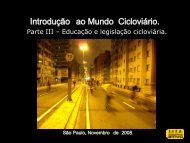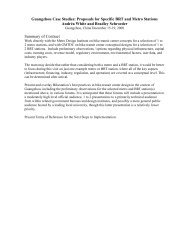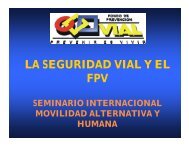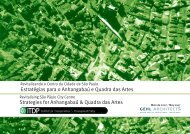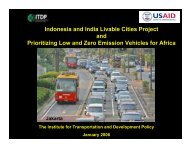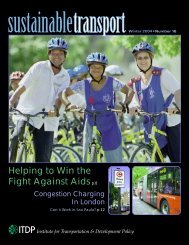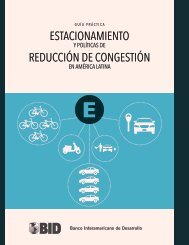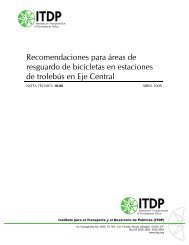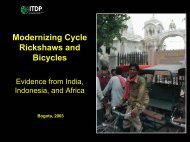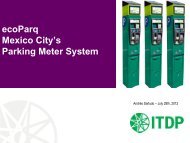Making TransJakarta a World Class BRT System - ITDP | Institute for ...
Making TransJakarta a World Class BRT System - ITDP | Institute for ...
Making TransJakarta a World Class BRT System - ITDP | Institute for ...
You also want an ePaper? Increase the reach of your titles
YUMPU automatically turns print PDFs into web optimized ePapers that Google loves.
If both the Blue and Green Lines are built, they could raise some Rp.160 million per day<br />
in fare revenue and roughly Rp. 48 billion annually. (This is $5.3 million annually.)<br />
Raising the fare will not help to increase revenues because ridership falls.<br />
The low ridership levels result from the fact that very few people’s trips would be easily<br />
served by this particular routing. Most people would have to switch from buses or other<br />
modes, and lack of a feeder bus system, the lack of compared to those projected by<br />
SITRAMP are mainly due to the false expansion factors used in the SITRAMP model.<br />
This 25.7km system would cost a minimum $925 million but could cost $1.4 billion or<br />
more (the cost of the Kuala Lumpur monorail). Of this, only some $60 - $70 million<br />
would be recovered from passenger fares in the first ten years. There<strong>for</strong>e, DKI Jakarta<br />
needs to be prepared to pay some $1 billion in capital investments, and provide ongoing<br />
operating subsidies <strong>for</strong> this to be viable.<br />
While we have not observed the suitability of the corridors <strong>for</strong> <strong>BRT</strong>, if <strong>BRT</strong> were<br />
implemented on the same corridors, we project that it would capture some 75,000 daily<br />
passengers. The main difference in demand is due to the lower fare and better<br />
connectivity with the rest of the <strong>TransJakarta</strong> <strong>BRT</strong> system. The cost would be less than<br />
$50 million to construct, and would generate some $6 .25 million in annual revenue,<br />
more than enough to cover the operating costs and the cost of bus procurement.<br />
Initial demand estimates <strong>for</strong> the monorail used SITRAMP, a model developed by JICA.<br />
Using SITRAMP, the demand on the proposed monorail would be 98,741 daily riders <strong>for</strong><br />
both lines. Un<strong>for</strong>tunately, due to gaps in the network, lack of data on paratransit<br />
vehicles, limited and outdated traffic counts at relevant locations, and exaggerated<br />
expansion factors, the SITRAMP data was yielding model results that diverge widely<br />
from our own observed traffic counts. We there<strong>for</strong>e had to recreate the traffic model,<br />
also using EMME/2 and also in cooperation with UI CTS. Over 60,000 on-board origin<br />
destination surveys were conducted with transit passengers. Calibration of the entire<br />
network was also done with observed data. The control points <strong>for</strong> observed volumes of<br />
passengers correspond to the 60 bi-directional sections of the OD survey, which were<br />
used to expand the OD. In addition, 12 bidirectional points were added to refine the<br />
adjustment. The results of this model calibration were to give us predicted values much<br />
closer to observed values.<br />
Monorail Project<br />
The existing monorail project proposal includes two lines, the Blue Line from Tebet to<br />
Roxi, and a circular Green Line.<br />
Final Recommendations <strong>for</strong> <strong>TransJakarta</strong>, p. 69



